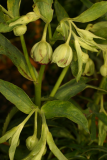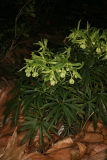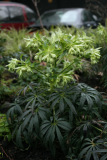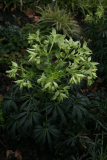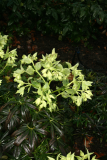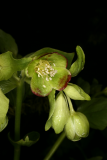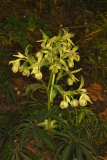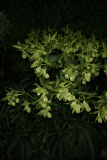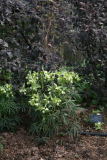Additional notes (click to expand)
Medicinal
This plant has been used in traditional medicine.
A very toxic plant that is considered to be useful for reducing blood pressure in various conditions of hypertension. The root contains the alkaloids nervine, pseudo-nervine and veratridine.
This species has similar medicinal properties to the black hellebore, H. niger. These properties are:- Black hellebore is a very poisonous plant that is toxic when taken in all but the smallest doses.
https://pfaf.org/user/Plant.aspx?LatinName=Helleborus+foetidus
Phytochemistry
Active principles: aerial parts: cardiac glycosides (bufadienolides), hellebrin, steroid saponins (helleborin),
ranunculoside, alkaloids (celliamine, sprintillamine).
Wink, M. (2009). Mode of Action and toxicology of plant toxins and poisonous plants. Mitt. Julius Kuhn-Inst. 421:93-111. p.99
Toxicity
Class 1a: Extremely hazardous: cardiac glycosides inhibit Na+,K+-ATPase, cardiac glycoside intoxication, vomiting, gastroenteritis with violent diarrhoea, delirium, convulsions, arrhythmia, death by respiratory arrest, alkaloids have similar properties as veratrine and aconitine.
Wink, M. (2009). Mode of Action and toxicology of plant toxins and poisonous plants. Mitt. Julius Kuhn-Inst. 421:93-111. p.99
Toxic due to cardiac glycosides
Professor Anthony Dayan, 2022
Geographical distribution
- Africa, Northern Africa, Morocco
- Europe, Middle Europe, Belgium
- Europe, Middle Europe, Germany
- Europe, Middle Europe, Switzerland
- Europe, Northern Europe, Great Britain
- Europe, Southeastern Europe, Italy
- Europe, Southwestern Europe, France
- Europe, Southwestern Europe, Portugal
- Europe, Southwestern Europe, Spain
Helleborus foetidus L.
Family: RANUNCULACEAEGenus: Helleborus
Species: foetidus L.
Common names: Stinking hellbore
Distribution summary: N. Africa, Europe
Habit: Perennial
Hardiness: H5 - Hardy; cold winter
Habitat: Lowland, open woodland, grassland, scrub and verges
Garden status: Currently grown
Garden location: Plants of the World (B)
Flowering months: February, March, April
Reason for growing: Medicinal, toxic
.JPG)
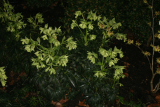
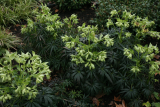
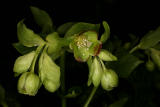
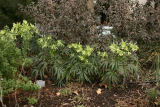
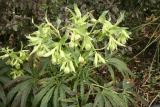
.JPG)
.jpg)
.JPG)
